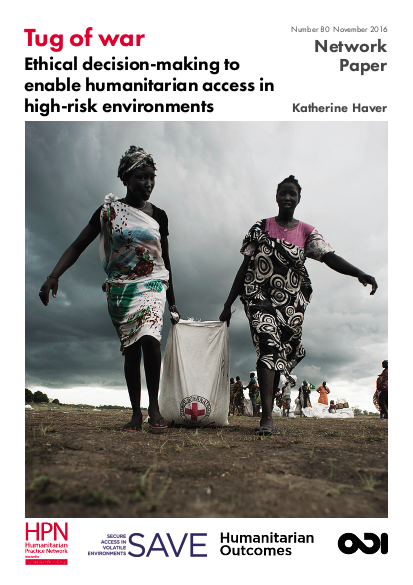
This Network Paper seeks to contribute to solutions to an important and vexing problem: how can humanitarian organisations help people caught up in conflicts, when these conflicts make it dangerous for aid workers to operate safely? Many humanitarian staff and organisations believe that being ethical and principled is the best, most proven way to protect the people they seek to help and themselves. Being principled is therefore both a moral and a practical choice. As described in this paper, however, the fundamental humanitarian principles come into tension with one another, and the environment forces aid organisations to make compromises. Any breach of ethical standards or humanitarian principles poses a risk to the organisation being able to fulfil its mission of saving lives and relieving suffering. Agencies can effectively deal with this by adopting a risk management approach, in which they view such compromises as a risk to assess and then mitigate, deny or accept.
The paper has three specific objectives, one for each section:
- To describe some of the hard choices and ethical problems that humanitarian organisations face as they take decisions to try to enable access in high-risk environments
- To present a model for a risk management framework that better incorporates programme criticality, to enable more ethical decision-making.
- To present some decision-making practices that show promise in allowing organisations to access affected people in high-risk settings, and for people to access aid.
